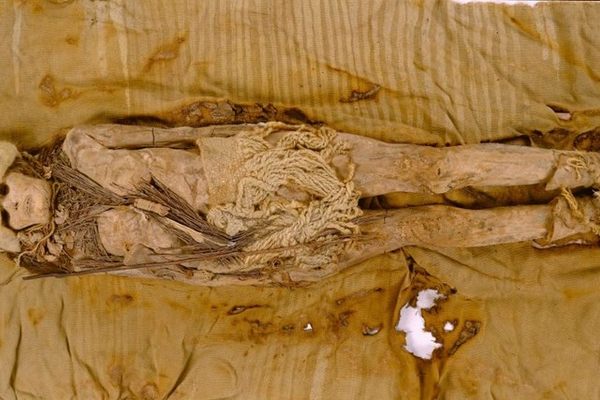Why Scientists Are Studying 9,500-Year-Old Chewing Gum
Back then, it was used as adhesive for tools and weapons.

For ancient Scandinavians, chewing gum was not about passing the time or freshening breath. It was an essential tool. Archaeologists believe that chewed-up pieces of birch bark, the ancient equivalent of gum, were used by people as an adhesive, to hold together tools and weapons. Now, a team of researchers want to know more about the people who chewed on this bark millennia ago.
The researchers focused on three specimens, which were found at an archaeological site in Sweden. The trio look like masticated lumps with imprints of teeth or fingers. Preserved in these lumps are microscopic strands of human DNA, most likely from saliva. These strands tell a story about how Mesolithic people interacted with their environment.
“I think the most interesting part is that we’re actually capturing a moment,” says Natalija Kashuba, a Ph.D. student at Uppsala University in Sweden. Kashuba is the lead author on a study, pre-printed on bioRxiv, that presents an analysis of these bits of bark. “This isn’t DNA from deceased ancient individuals—we’re actually catching DNA from a person while they’re alive and doing something. I think that’s kind of fun and remarkable.”
Using state-of-the-art genetic technology, Kashuba and her collaborators were able to analyze pieces of human DNA encased in the gum’s resin. “These were processed by humans somehow,” says Kashuba. “Either they were chewed or held by hand for long enough for DNA to get capsuled within this material. Then we got to extract it.”
By comparing the DNA sequences to genetic libraries of ancient human populations, the team found that the people who had munched on these bits of bark were from the earliest known group of Scandinavian hunter-gatherers. These individuals lived before Sweden was covered in glaciers in the latest ice age, over 9,500 years ago.
The findings also provide some insight into the social dynamics of these ancient people. For example, each piece of gum was only chewed by a single person, and both women and men partook, giving some insight into the community’s social structure—creating these sticky lumps wasn’t the domain of a single gender.
The gum comes from an archaeological site known as Huseby Klev near the southwestern coast of Sweden. The site now sits inland, but thousands of years ago, when sea level was 80 feet higher than today’s levels, it was a beach on an island at the end of a narrow fjord.
Huseby Klev was originally excavated in the 1980s and has provided a wealth of archaeological materials from thousands of years of civilization, which remained well-preserved under layers of marine clay and sand. Archaeologists have found scores of animal bones at the site, mostly fish, but also including whale and dolphin remains. Many of the bones had been sharpened to form tools, like arrowheads and fishhooks.
The chewed-up wads of birch bark have been of interest to archaeologists since they were originally found in 1980s, but this research is the first look into the genetic imprint left behind by the chewers. This study adds a new layer to archaeologists’ understanding of one of the oldest human societies in Scandinavia.
“This research can increase the size of the window,” says Kashuba. “We already have the possibility of extracting DNA from ancient human remains, like bones and hair. This is another way, something completely new.”
Gastro Obscura covers the world’s most wondrous food and drink.
Sign up for our regular newsletter.






























Follow us on Twitter to get the latest on the world's hidden wonders.
Like us on Facebook to get the latest on the world's hidden wonders.
Follow us on Twitter Like us on Facebook